© 2013 The Texas Lawbook.
By Patricia Baldwin
Lifestyle Writer for The Texas Lawbook
Forget the dictionary. Spring in Texas means bluebonnets, rattlesnakes and a new golf season, not necessarily in that order. It’s time for the “Texas Swing” for the professional tours – and it’s time to take a look in your golf bag.
The annual spring conundrum: Keep those old faithful clubs or freshen the bag with new technology? Texas golf legend Kathy Whitworth has been known to quote an old saying: It’s a poor craftsman who blames his tools. Of course, Whitworth also is known for winning all of her 88 LPGA victories with the same putter (a Walter Hagen Tom-Boy).
It’s a question of 14 – the allowable number of clubs for a round. Some Texas attorneys gave The Texas Lawbook a look into their golf bags. Ready to take notes?
Many avid golfers, such as John Kim of the Kim Law Firm in Houston, mix manufacturer brands in their golf bags, selecting various clubs for their individual attributes. Or as Kim says with a laugh, he suffers from “club infatuation.” He adds that his bright orange golf bag (from Pebble Beach Golf Links) “reminds me to be tranquil. The vicious turmoil starts with what is inside my bag.”
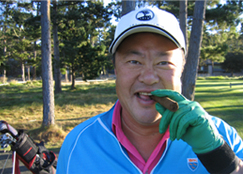
as part of his golf equipment.
Kim says, “My golf bag is like my mind – a hodgepodge of thoughts.” Then he turns serious. Well, sort-of serious.
“These clubs have been individually fitted with different shafts to deal with my bad swing habits,” he says, “and some are personalized as I tend to leave clubs on the course. Of course, no golf day can start without some cabbage – cole slaw or kimchi – for good luck and the prospect of successful bets. And no day is complete without cigars and ‘juice.’”
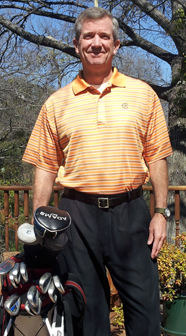
part of his law practice.
He says he acquired the Adams driver after a Cobra driver snapped in a bag falling incident. One evening, he went shopping at a local golf retailer and was one of the few customers at a “demo” night.
“I was pretty much the only person there to try different drivers, so the sales guys were giving me a lot of attention,” he recalls. “But the Adams guy basically gave me a golf lesson on fixing some swing flaws on my driver swing.”
The next thing he knew, he owned the Adams driver – and he still likes it. His acquisition of Cobra irons came after trying them as a rental set during a trip to Palm Springs when he didn’t have his own clubs. As for his putter, he says, “Sometimes it works; sometimes not so much.”
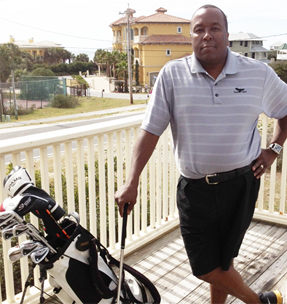
in the community.
The litigator, who has first-chaired more than 100 jury trials to verdict, also has organized golf tournaments for other charitable causes, including the Ronald McDonald House. However, he’s quick to credit the HGA for doing “so much good for Houston and the surrounding region.”
Raven says, “Houston has one of the great golf cultures in the world. From Jackie Burke to Jimmy Demaret to Dave Marr, Houston’s and Houstonians’ contributions to golf are legendary.”
His bag, too, holds an Adams driver – a 9.5-degree Launch Lab. Raven explains, “I got on the ‘TrackMan,’ [golf simulator] and my carry distance improved from 268 yards to 286. That’s primarily due to the shaft. It’s a super hot club.” He notes that the driver is only the fifth he has owned in 42 years of playing golf.
His other clubs include: TaylorMade R9 irons (3-iron through pitching wedge), Vokey 50-degree, 54-degree and 58-degree wedges, a Scotty McCarron putter and a Titleist 915, 17-degree hybrid.
“My Vokeys are custom made for me – with four degrees of bounce,” he adds.
Like other attorneys, Alejandro “Alex” Cestero finds networking opportunities in golf. The vice president, general counsel and secretary of Lufkin Industries Inc. in Lufkin says he only plays about six times a year. (An active international work travel schedule and coaching various teams for his three young children doesn’t leave a lot of on-course time.)
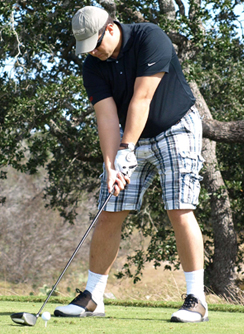
during law school.
Cestero, who hails from Puerto Rico where baseball and basketball dominate, did not take up golf until he attended Stanford University Law School. He remembers, with a laugh, his first outing at the Stanford Golf Course, famous for its first tee where a main road travels below the tee box. Cestero recalls, “I successfully missed the traffic below, found my ball and then was nearly pelted by the men’s varsity golf team that was playing right behind us in a pre-season warm-up.”
And even the long-drive feat was not without its unique hazards. Feeling somewhat cocky after the long drive, Cestero says, “Karma caught up with me.” At the next tee box, he hit his drive, sat down in the cart and took a swig of a beverage in a can. A yellow jacket had gone into the can, and as he sipped, it bit his bottom lip. He was thankful to a subsequent cold can of beer and “good first aid” from the course attendants. “The rest of the round was fun, but golf somehow has a way of always humbling you,” Cestero says.
Again, Plano-based clubmaker Adams Golf will be happy. Cestero plays with Adams woods. His bag also carries Cleveland Golf irons and wedges. “A few years old,” Cestero notes, “but they do the trick.”
When Carol Stephenson thinks about golf clubs, she fondly remembers her first set. “I went to Sears and paid $50 for a starter set,” says the partner in the Dallas office of the Myers Law Group. “I was nearly 30 when I had a stick in my hand.” Today, her bag sports mostly Cobra clubs, but don’t be surprised if a TaylorMade RocketBallz soon takes up space, especially since the Stage 2 models are now on the market.
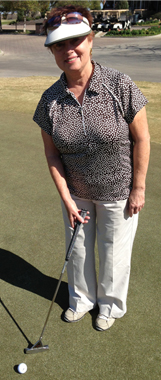
a putter on impulse —
and won’t give it up.
Unlike other golfers, Stephenson doesn’t “want to mix brands” in her bag. There is, however, a major exception, which comes with a story.
Her putter is an Ashdon Golf Bermuda Triangle “Atlantis” model. Stephenson relates that she and her husband, Tom Englander, traveled to California at the end of October 2001 to visit friends. For one friend’s birthday, they went to the Palm Springs area to play golf.
The group arrived early at the Landmark Golf Club in Indio, Calif., (now the Golf Club at Terra Lago and former host for the PGA Tour Skins Game). With time to spare, they visited a tent sent up by a teaching pro, who was selling a unique putter.
“It was the funniest looking putter, but I wanted one. I liked the way it felt,” Stephenson remembers. She recently re-gripped that putter – and doesn’t foresee giving it up.
“Funniest looking putter” is flattering to Ronnie Pritchett, founder of Ashdon Golf and creator of the Bermuda Triangle series of putters. “I hear a lot of such stories,” he says. “The putter is used longer than any other club in the bag.”
And putting, he learned when he became a PGA club pro in 1976, is one of the toughest golf skills to teach. That got him thinking …
Eventually, inspired by the Prince tennis racket, Pritchett designed a putter in the late 1990s with a similar design for stability. “It’s like an arch over a bridge,” he says. “I knew a lot about structural engineering.”
Pritchett is still doing things “his way” – selling directly to the consumer via his website and at demo days along the California coast. He’s also writing a book that will “answer every question people have ever asked me about the putter.” OK. Stay tuned. But how about a final tip?
Pritchett is happy to oblige: “Golfers get into the habit of picking up the putter on the way back. Bring the putter back nice and low…”
The Texas Swing:
|
March 28-31 April 4-7 April 11-14 April 25-28 May 3-5 May 16-19 May 23-26 |
What’s in your golf bag? What was your greatest moment on the golf course? What was your greatest game? What’s your favorite golf course – and why? Email your golf-talk to patricia.baldwin@texaslawbook.net.
© 2013 The Texas Lawbook. Content of The Texas Lawbook is controlled and protected by specific licensing agreements with our subscribers and under federal copyright laws. Any distribution of this content without the consent of The Texas Lawbook is prohibited.
If you see any inaccuracy in any article in The Texas Lawbook, please contact us. Our goal is content that is 100% true and accurate. Thank you.
